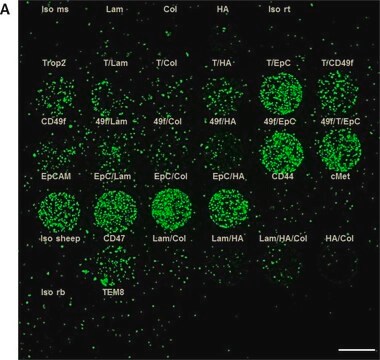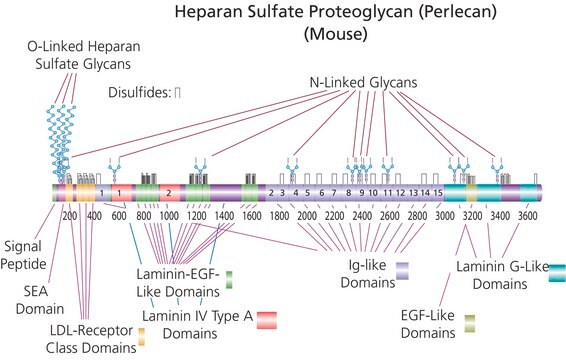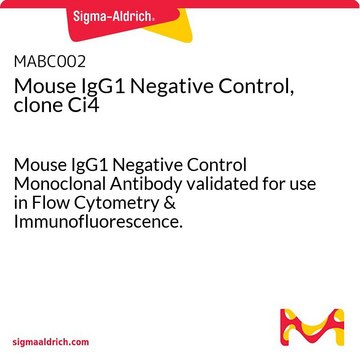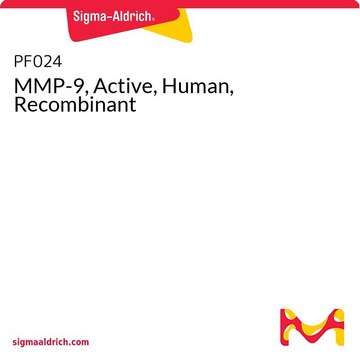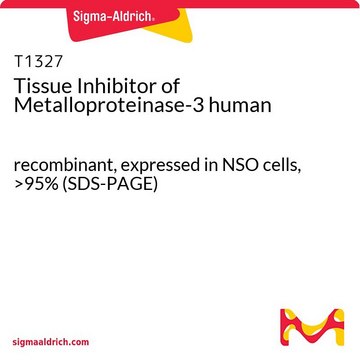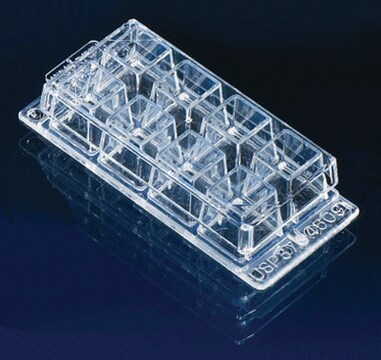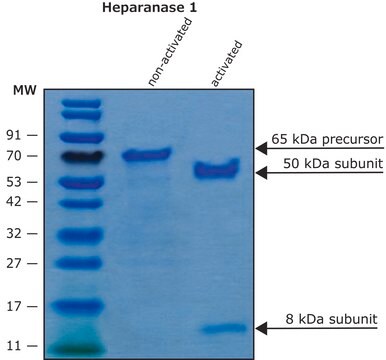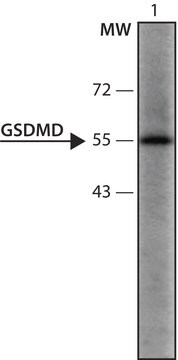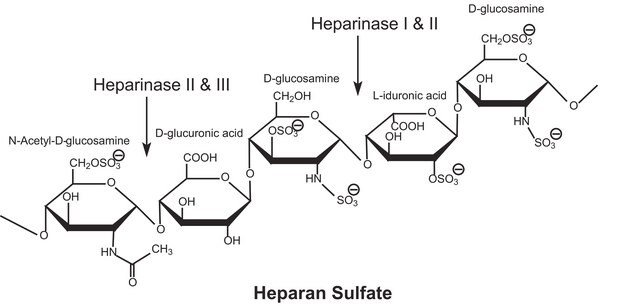MABT333
Anti-CD167a/DDR1 Antibody, clone 5D5
clone 5D5, from mouse
Synonyme(s) :
Epithelial discoidin domain-containing receptor 1, CD167 antigen-like family member A, CD167a, Cell adhesion kinase, Discoidin receptor tyrosine kinase, Epithelial discoidin domain receptor 1, HGK2, Mammary carcinoma kinase 10, MCK-10, Protein-tyrosine k
About This Item
Produits recommandés
Source biologique
mouse
Niveau de qualité
Forme d'anticorps
purified antibody
Type de produit anticorps
primary antibodies
Clone
5D5, monoclonal
Espèces réactives
human
Technique(s)
flow cytometry: suitable
immunocytochemistry: suitable
Isotype
IgG1κ
Numéro d'accès NCBI
Numéro d'accès UniProt
Conditions d'expédition
ambient
Modification post-traductionnelle de la cible
unmodified
Informations sur le gène
human ... DDR1(780)
Description générale
Spécificité
Immunogène
Application
A representative lot bound immobilized recombinant human DDR1b extracellular domain (Kd ~2 nM) without affinity toward DDR2 extracellular domain or DDR1b membrane-distal DS domain containing the collagen-binding site (Carafoli, F., et al. (2012). Structure.
A representative lot detected the exogenously expressed DDR1b wild-type and mutant constructs on the surface of transfected HEK293 cells (Carafoli, F., et al. (2012). Structure.
A representative lot inhibited collagen-induced autophosphorylation of DDR1b exogenously expressed on the surface of transfected HEK293 cells (Carafoli, F., et al. (2012). Structure. 20(4):688-697).
Structure cellulaire
Qualité
µ
Description de la cible
Forme physique
Stockage et stabilité
Recommandations relatives à la manipulation du produit : Dès réception, et avant le retrait du bouchon, centrifuger le flacon et mélanger délicatement la solution. Répartir en aliquotes dans des microtubes à centrifuger et conserver ces derniers à -20 °C. Éviter les congélations/décongélations répétées, qui peuvent détériorer les IgG et nuire aux performances du produit.
Autres remarques
Clause de non-responsabilité
Vous ne trouvez pas le bon produit ?
Essayez notre Outil de sélection de produits.
Code de la classe de stockage
12 - Non Combustible Liquids
Classe de danger pour l'eau (WGK)
WGK 2
Point d'éclair (°F)
Not applicable
Point d'éclair (°C)
Not applicable
Certificats d'analyse (COA)
Recherchez un Certificats d'analyse (COA) en saisissant le numéro de lot du produit. Les numéros de lot figurent sur l'étiquette du produit après les mots "Lot" ou "Batch".
Déjà en possession de ce produit ?
Retrouvez la documentation relative aux produits que vous avez récemment achetés dans la Bibliothèque de documents.
Notre équipe de scientifiques dispose d'une expérience dans tous les secteurs de la recherche, notamment en sciences de la vie, science des matériaux, synthèse chimique, chromatographie, analyse et dans de nombreux autres domaines..
Contacter notre Service technique